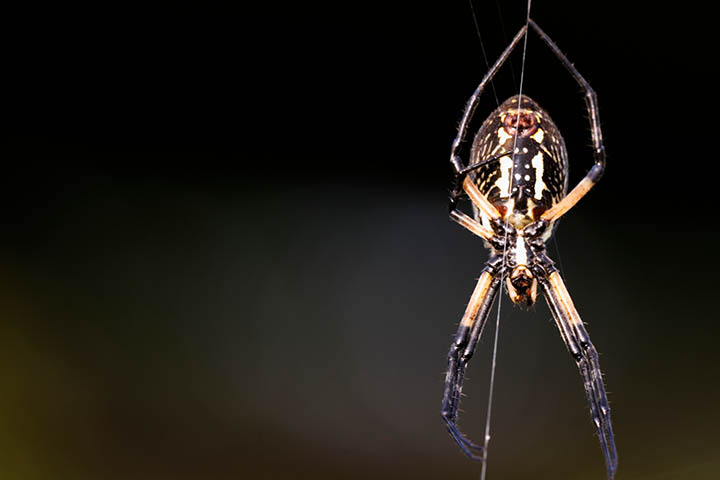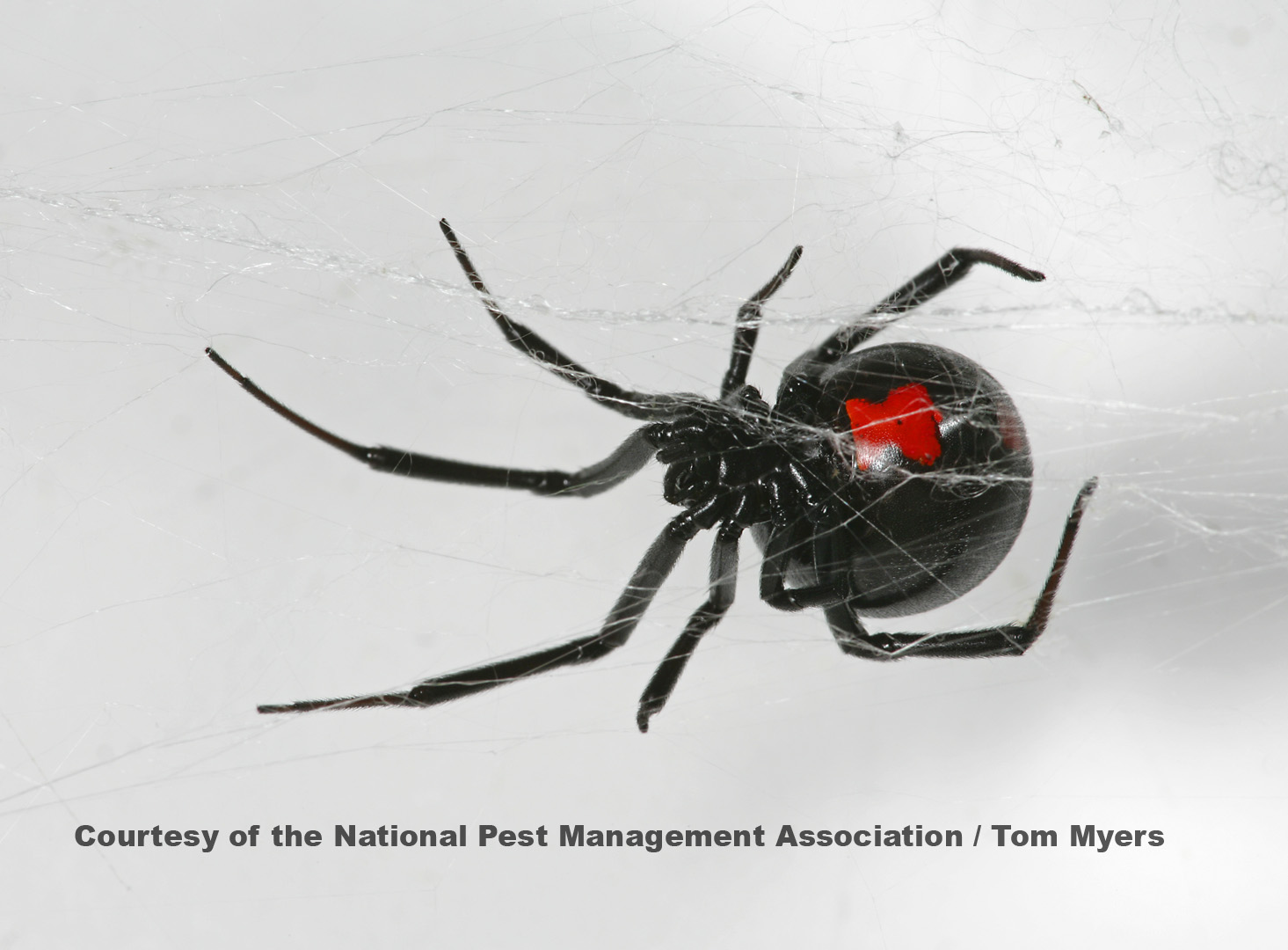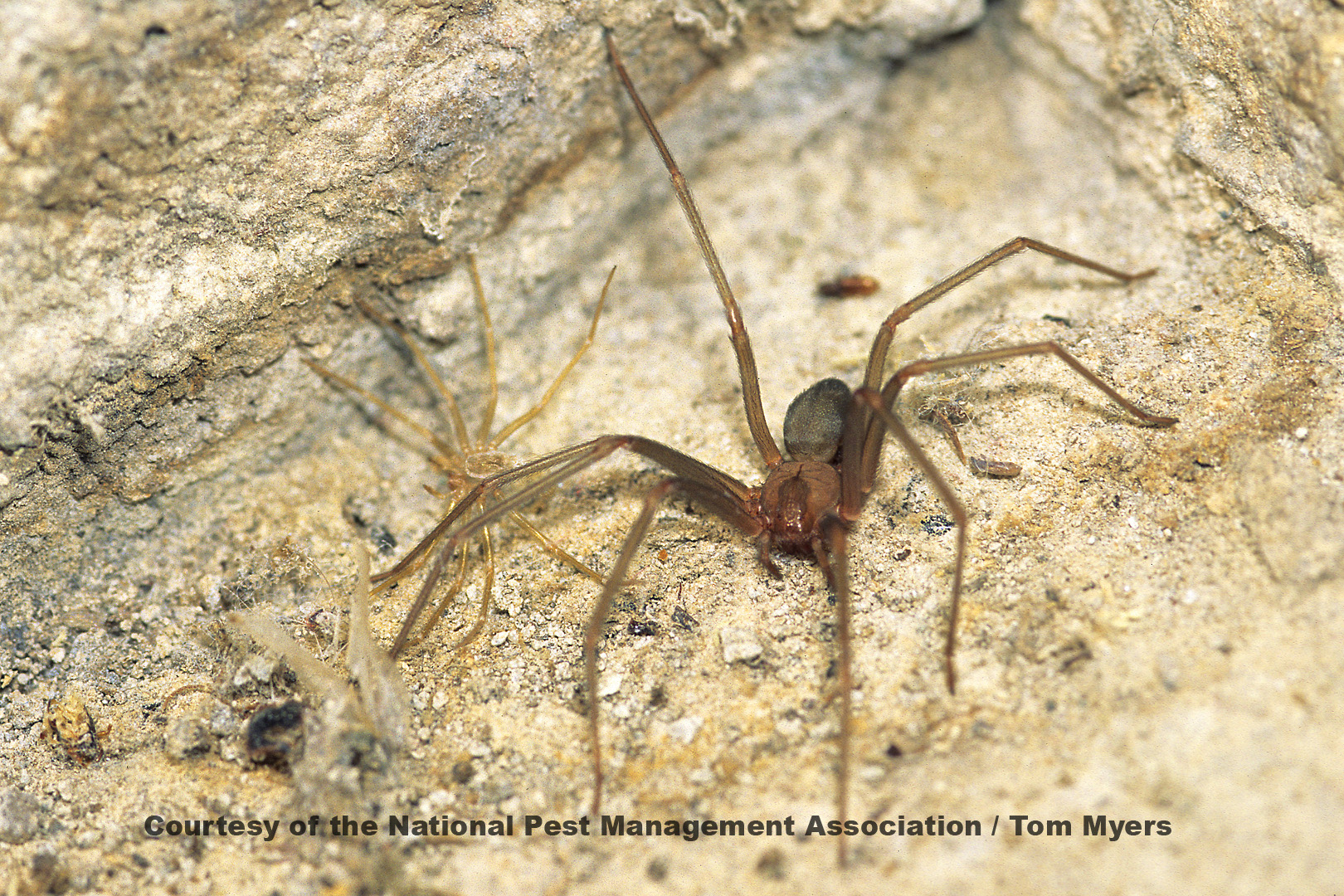Spiders
Did you know? There are over 35,000 species of spiders.

Explore Spiders
Spider Facts for Kids
- The largest spider in the world is a species of tarantula found in South America where one specimen had a leg span of over 11 inches.
- Spiders don't get caught in their own webs because they have self-oiling legs.
- Many people associate spiders with webs, but the truth is not all spiders spin these silk structures, which are used to catch their prey. In fact, several species of spiders use different strategies for obtaining food.
There are about 3,000 species of spiders roaming around North America, but only two in the southern and western United States can cause serious harm when accidentally disturbed — the black widow and brown recluse.
Looking for more arachnid facts for kids? Find detailed information on spider pest control at the official NPMA website.
Also learn how to make a dangling spiders, edible spiders, egg carton spiders, and spider wreaths!
Black Widow Spiders
Female black widow spiders have a red hourglass shape on their backs. Males have white spots on their sides. Males only live about a year, but the female can live up to 3 years. Hungry female black widow spiders have been known to kill the male spider after mating, but that isn’t always the case. Geographically, black widow spiders can be found in the Eastern, Central and Western United States.
- Size: 3/4" to 3/8"
- Shape: Round
- Color: Black with characteristic red "hourglass" on back
- Legs: 8
- Wings: No
- Antenna: No
- Common Name: Black widow spider
- Kingdom: Animalia
- Phylum: Arthropoda
- Class: Arachnida
- Order: Araneae
- Family: Theridiidae
- Species: Lactrodectrus mactans
Diet:
Black widow spiders eat other pests. Sometimes they even eat other spiders!
Habitat:
Black widow spiders tend to live in cellars and in piles of wood or trash.
Impact:
The bite of a female black widow spider can be poisonous but not deadly to humans. The male black widow spider does not bite. A black widow spider bite is pale in the middle with a red ring around it and is followed by severe cramping, weakness, sweating, headache, anxiety, itching, nausea, vomiting, difficult breathing and increased blood pressure.
Prevention:
- Wear heavy gloves when moving things that have been stored for a long time.
- Shake out your shoes before putting them on.
- Just to be safe, stay away from spider webs.
Find spider information for kids and teachers alike at the official NPMA website.
Also watch a black widow and brown recluse spider face off in episode 1 of Bug Battles!
Brown Recluse Spiders
Brown recluse spiders get their name because of their tendency to hide in corners. They are identified by the dark brown violin shaped markings on their back. Native to Kansas, Texas, Oklahoma and Mississippi, they are nocturnal pests. Keep reading to find more kid-friendly facts on these fascinating arachnids.
- Size: 5/8"
- Shape: Round
- Color: Light to dark brown, with a dark brown violin shaped marking on their back.
- Legs: 8
- Wings: No
- Antenna: No
- Common Name: Brown recluse spider
- Kingdom: Animalia
- Phylum: Arthropoda
- Class: Arachnida
- Order: Araneae
- Family: Sicariidae
- Species: Loxosceles reclusa
Diet:
Brown recluse spiders eat other bugs like cockroaches and crickets.
Habitat:
Brown recluse spiders live in cellars and in piles of wood or trash.
Impact:
The brown recluse spider only bites to protect itself. Its bite is painful and can produce an open, ulcerating sore. The center of their bite becomes a blister surrounded by an angry-looking red ring, which is then surrounded by a white ring. A red, itchy rash usually appears in the first 24-48 hours of being bitten. Other symptoms include fever, chills, nausea, vomiting and muscle aches.
Prevention:
- Don’t leave clothing on the floor.
- Store clothes and shoes inside plastic containers and shake them out before wearing them.
Can’t find what you were looking for on PestWorld for Kids? Parents and students can find even more arachnid facts and information for kids and adults at the official NPMA website.




